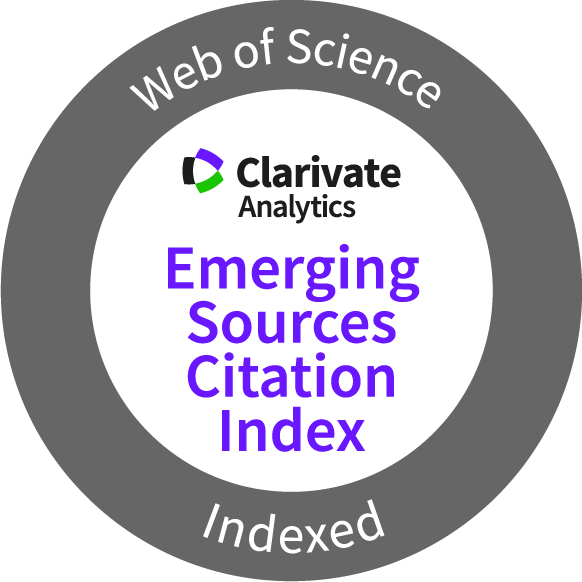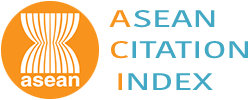Genetic Variability of Oil Palm (Elaeis guineensis Jacq.) Deli Dura Inter-Crosses Population in The MPOB Research Station Hulu Paka, Terengganu, Malaysia
Keywords:
cluster analysis, Deli dura, genetic variability, principal component analysisAbstract
The oil palm Deli dura breeding population is the most widely used dura for breeding and seed production. Due to its narrow genetic base, with current material originating from the four initial dura palms of Bogor, the Deli dura is presumed to have low genetic diversity. A total of 35 MPOB Deli dura inter-crosses from eight paternal parents were characterized based on 22 different traits including bunch yields, bunch quality components, as well as other vegetative and physiological traits. Based on the principal component analysis of the collected data, the first five components (PC1-PC5) possessing eigenvalues surpassing 1, contributed to 97.83% of the overall variance. PC1, with the highest variation (30.88%), was characterized mainly by vegetative and physiological traits, while PC2, with about 26.02% variation, was primarily associated with bunch quality components. The principal component score plot suggests that populations of the Johor Labis paternal parents 0.278/318 and 0.278/295 are unique populations and can be used in further breeding programmes. Besides, the populations from Ulu Remis (0.280/68) and Ulu Remis × Elmina (0.281/44) paternal parents were positively associated with PC2, suggesting strong performance in bunch quality components. Cluster analysis indicated that all populations were clustered into three main groups comprised of several sub-clusters, with populations of paternal parents 0.279/48 (Banting) and 0.281/74 (Banting) were outliers in the second and third clusters, respectively. In overall, the study revealed the presence of variation among the Deli dura inter-crosses based on the traits evaluated. These results will be useful for the selection of specific populations for genetic improvements of bunch yield, bunch quality, as well as vegetative and physiological characteristics.
Downloads
Metrics
References
Ahmad, H.F., Awar, S.I., Aziz, O. & Ali, M.A. 2014. Multivariate analysis of some metric traits in bread wheat (Triticum aestivum L.). European Journal of Biotechnology and Bioscience, 1(4): 22-26.
Arolu, I.W., Rafii, M.Y., Marhalil, M., Mohamed, M.H., Zulkefly, S., Harun, A.R., Mohd Isa, Z.A., Mohd Din, A., Kushairi, A. & Rajanaidu, N. 2017. Breeding of high yielding and dwarf oil palm planting materials using Deli dura × Nigeria pisifera population. Euphytica, 213:154 (1-15). DOI: https://doi.org/10.1007/s10681-017-1943-z
Blaak, G., Sparnaaij, L.D. & Menendez, T. 1963. Breeding and inheritance in the oil palm (Elaeis guineensis Jacq.) II: Method of bunch quality analysis. Journal of West African Institute for Oil Palm Research, 4: 146-155.
Burstyn, I. 2004. Principal component analysis is a powerful instrument in cccupational hygiene inquiries. The Annals of Occupational Hygiene, 48(8): 655–661.
Corley, R.H.V. & Breure, C.J. 1981. Measurements in oil palm experiments, Internal Report 17. Unipamol Malaysia Sdn Bhd and Harrisons Fleming Advisory Services.
Denton, O.A. & Nwangburuka, C.C. 2011. Genetic variability in eighteen cultivars of Solanum anguivi Lam. using principal component analysis (PCA) and single linkage cluster analysis (SLCA). Annals of Biological Research, 2(4): 62-67.
Department of Statistics Malaysia (DOSM). 2022. Selected agricultural indicators, Malaysia, 2022 [WWW Document]. URL https://www.dosm.gov.my/v1/index.php?r=column/cthemeByCat&cat=72&bul_id=b2M4QlpZamFlN2w5ZjFPRlY4TElSUT09&menu_id=Z0VTZGU1UHBUT1VJMFlpaXRRR0xpdz09 (accessed 04.01.24).
Fadila, A.M., Mohd Din, A., Zulkifli, Y., Marhalil, M., Norziha, A., Nor Azwani, A.B., Suzana, M., Mohd Mustakim, M., Mohd Yazid, H., Ong Abdullah, M., Ahmad Parveez, A.K. & Kushairi, A. 2019. Oil palm (Elaeis spp.) breeding in Malaysia. In: Advances in Plant Breeding Strategies: Industrial and Food Crops. J. Al-Khayri, S. Jain & D. Johnson (Eds.). Springer Cham, Switzerland. pp 489-535.
Fadila, A.M., Norziha, A., Mohd Din, A., Rajanaidu, N. & Kushairi, A. 2016. Evaluation of bunch index in MPOB oil palm (Elaeis guineensis Jacq.) germplasm collection. Journal of Oil Palm Research, 28(4): 442-451. DOI: https://doi.org/10.21894/jopr.2016.2804.05
Hamza, A.M., Collins, A., Ado, S.G., Ikuenobe, C.E., Ataga C.D. & Odewale, J.O. 2014. Proximate compositions evaluation and variability among cultivars of date palm (Phoenix dactylifera L.) in Nigeria. International Journal of Plant and Soil Science, 3(3): 248-259. DOI: https://doi.org/10.9734/IJPSS/2014/6973
Hardon, J.J., Corley, R.H.V. & Lee, C.H. 1987. Breeding and selecting the oil palm. In: Improving Vegetatively Propagated Crops. A.J. Abbott and R.K. Atkin (Eds.). Academic Press. pp 63.
Hardon, J.J. & Thomas, R.L. 1968. Breeding and selection of the oil palm in Malaya. Oleagineaux, 3: 85-90.
Hartley, C.W.S. 1988. The Oil Palm. 3rd Edition. Longman, London. 958 pp.
Iannucci, A., Codianni, P. & Cattivelli, L. 2011. Evaluation of genotype diversity in oat germplasm and definition of ideotypes adapted to the mediterranean environment. International Journal of Agronomy, 2011: 870925. DOI: https://doi.org/10.1155/2011/870925
Jin, J., Lee, M., Bai, B., Sun, Y., Qu, J., Rahmadsyah, Alfiko, Y., Lim, C.H., Suwanto, A., Sugiharti, M., Wong, L., Ye, J., Chua, N.H., Yue, G.H. 2016. Draft genome sequence of an elite Dura palm and whole-genome patterns of DNA variation in oil palm. DNA Research, 23(6): 527-533. DOI: https://doi.org/10.1093/dnares/dsw036
Junaidah, J., Kushairi, A., Isa, Z.A., Mohd Din, A., Noh, A. & Rajanaidu, N. 2004. PS7: High bunch index breeding population. MPOB Information Series No. 228 [WWW Documents]. URL palmoilis.mpob.gov.my/publications/TOT/TT-221.pdf (accessed 04.01.24).
Kushairi, A. & Rajanaidu, N. 2000. Breeding populations, seed production and nursery management. In: Advances in Oil Palm Research. B. Yusof, B.S. Jalani & K.W. Chan (Eds.). Malaysian Palm Oil Board, Kuala Lumpur. pp. 39-96.
Li-Hammed, M.A., Kushairi, A.D., Rajanaidu, N., Mohd Sukri, H., Che Wan Zanariah, C.W.N. & Jalani, S. 2016. Genetic variability for yield, yield components and fatty acid traits in oil palm (Elaeis guineensis Jacq.) germplasm using multivariate tools. International Journal of Agriculture, Forestry and Plantation, 2 (February): 219-226.
Malaysian Palm Oil Board (MPOB). 2024. Overview of the Malaysian oil palm industry in 2023 [WWW Document]. URL https://bepi.mpob.gov.my/images/overview/Overview2023.pdf (accessed 04.01.24).
Marhalil, M., Rajanaidu, N., Mohd Din, A., Suzana, M., Zulkifli, Y., Fadila, A.M. & Kushairi, A. 2016. Oil palm breeding and seed production in MPOB. In: Proceeding of International Seminar on Oil Palm Breeding and Seed Production. The International Society for Oil Palm Breeders, Selangor. pp. 64-77.
Mohammadi, S.A. & Prassana, B.M. 2003. Review and interpretation: Analysis of genetic diversity in crop plants-salient statistical tools and considerations. Crop Science, 43: 1235-1248. DOI: https://doi.org/10.2135/cropsci2003.1235
Murphy, D.J., Goggin, K. & Paterson, R.R.M. 2021. Oil palm in the 2020s and beyond: challenges and solutions. CABI Agriculture and Bioscience, 2: 39. DOI: https://doi.org/10.1186/s43170-021-00058-3
Noh, A., Rafii, M.Y., Mohd Din, A., Kushairi, A., Norziha, A., Rajanaidu, N., Latif, M.A. & Malek, M.A. 2014. Variability and performance evaluation of introgressed Nigerian dura × Deli dura oil palm progenies. Genetics and Molecular Research, 13(2): 2426-2437. DOI: https://doi.org/10.4238/2014.April.3.15
Norziha, A., Fadila, A.M., Marhalil, M., Zulkifli, Y., Mohd Din, A., Rajanaidu, N., Ong-Abdullah, M. & Kushairi, A. 2020. MPOB oil palm (Elaeis guineensis Jacq.) germplasms linked to compact trait for high density planting. Journal of Oil Palm Research, 32(3): 394-405.
Norziha, A., Fadila, A.M., Suzana, M., Marhalil, M., Zulkifli, Y. & Mohd Din, A. 2019. Principal component and cluster analysis as a tool in the assessment of genetic variability of Guinea germplasm populations. Poster presentation at the 3rd International Conference on Agricultural and Food Science (3rd ICAFS 2019), Kuala Lumpur, Malaysia, 8-11 December 2019.
Rajanaidu, N. & Jalani, B.S. 1999. Performance of D×P planting materials in various parts of the world. In: Proceeding of the Seminar on Worldwide Performance of D×P Oil Palm Planting Materials, Clones and Interspecific Hybrid. Palm Oil Research Institute of Malaysia, Kuala Lumpur. pp. 1-34.
Rao, V., Soh, A.C., Corley, R.H.V., Lee, C.H., Rajanaidu, N., Tan, Y.P., Chin, C.W., Lim, K.C., Tan, S.T., Lee, T.P. & Ngui, M. 1983. A critical reexamination of the method of bunch quality analysis in oil palm breeding, PORIM Occasional Paper No. 9. Palm Oil Research Institute of Malaysia, Selangor.
Richard, A.J. & Wichern, D.W. 2007. Applied multivariate statistical analysis. 6th Edition. Pearson Education Inc., New Jersey. 773 pp.
Rosenquist, E.A. 1985. The genetics base of oil palm breeding populations. In: Proceeding of International Workshop on Oil Palm Germplasm and Utilisation. Palm Oil Research Institute of Malaysia, Bangi. pp 27-56.
Saleh, H., Li-Hammed, M.A., Kushairi, A., Rajanaidu, N., Hassan, M.S., Che Wan Ngah, C.W.Z. & Sukaimi, J. 2018. Evaluation of oil palm germplasm from Senegal and Gambia using chemometric techniques. Malaysian Journal of Science, Health & Technology, 1(1): 10-20. DOI: https://doi.org/10.33102/mjosht.v1i1.9
Suzana, M., Zulkifli, Y., Marhalil, M., Rajanaidu, N., Mohd Din, A. & Kushairi, A. 2016. Principal component and cluster analysis as a tool in the assessment of genetic variability of Sierra Leone germplasm populations. Transactions of Persatuan Genetik Malaysia, No. 3: 213-216.
Tun Mohd Salim, W.N.S., Yaakub, Z., Mustaffa, S., Abu Bakar, N.A., Mohd Nasir, F., Marjuni, M., Amiruddin, M.D. & Ong-Abdullah, M. 2023. Genetic variability of MPOB-Cameroon oil palm germplasm based on morphological traits using multivariate analysis. Journal of Oil Palm Research, 35(3): 476-490. DOI: https://doi.org/10.21894/jopr.2022.0038
Ward, J.H. 1963. Hierarchical grouping to optimize an objective function. Journal of American Statistical Association, 58: 236-244. DOI: https://doi.org/10.1080/01621459.1963.10500845
Published
How to Cite
Issue
Section
Any reproduction of figures, tables and illustrations must obtain written permission from the Chief Editor (wicki@ukm.edu.my). No part of the journal may be reproduced without the editor’s permission




















